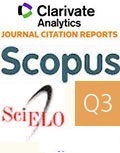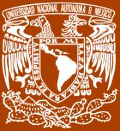Sensibilidad de los anillos de crecimiento de Fraxinus uhdei a la temperatura y precipitación en el área urbana de Medellín, Colombia
Tree-rings sensitivity of Fraxinus uhdei to temperature and precipitation in the urban area of Medellín, Colombia
Juan Pablo Diosa-Ospina1, Jorge A. Giraldo1,*, Felipe Franco-Gaviria1, Marileny Vasquez2, Sergio Alonso Orrego3
1 Facultad de Ingeniería, Tecnológico de Antioquia, Institución Universitaria, Calle 78B No. 72A 220 Medellín, Colombia.
2 Consultora independiente, Medellín, Colombia
3 Universidad Nacional de Colombia, Facultad de Ciencias Agrarias, Departamento de Ciencias Forestales, Cra. 64c #63-120, Medellín, Colombia.
Autor para correspondencia: (J.A. Giraldo) This email address is being protected from spambots. You need JavaScript enabled to view it.
Cómo citar este artículo:
Diosa-Ospina, J.P., Giraldo, J.A., Franco Gaviria, F., Vásquez, M., Orrego, S.A., 2024, Sensibilidad de los anillos de crecimiento de Fraxinus uhdei a la temperatura y precipitación en el área urbana de Medellín, Colombia: Boletín de la Sociedad Geológica Mexicana, 76 (3), A060524. http://dx.doi.org/10.18268/BSGM2024v76n3a060524
Manuscrito recibido: 19 de Enero, 2024; Manuscrito corregido: 12 de Abril, 2024; Manuscrito aceptado: 3 de Mayo, 2024.
ABSTRACT
Trees are sensitive to environmental conditions. Dendrochronology is the scientific discipline dedicated to studying and considering trees as bioindicators of environmental change. Although there are many tropical species with growth rings, there are few studies using urban trees as a reliable source of environmental information. This study aims to analyze the dendrochronological potential of Urapán / Fresno (Fraxinus uhdei Oleaceae) as an indicator of environmental change related to precipitation and temperature in an urban area, specifically the city of Medellín, Colombia. We sampled 12 adult and healthy trees growing at an university campus in the city, applying standard dendrochronological techniques. A good synchronization of the tree-ring series (crossdating) was found, both visually and statistically (r = 0.49, p value < 0.05). We obtained a 37-year ring chronology (1986-2023). Our findings revealed a positive and significant correlation between the chronology and the average precipitation during the period November-March (r = 0.47, p < 0.05), and a negative relationship with the average temperature during the period October–May (r = 0.54, p value < 0.05). Both precipitation and temperature affect the growth of the species, which constitutes evidence of its dendroclimatic potential. It does not exist a previous report of the species F. uhdei to evaluate the potential bioindicator of climatic conditions in Medellín.
Keywords: Dendrochronology, climate, urban trees, crossdating.

